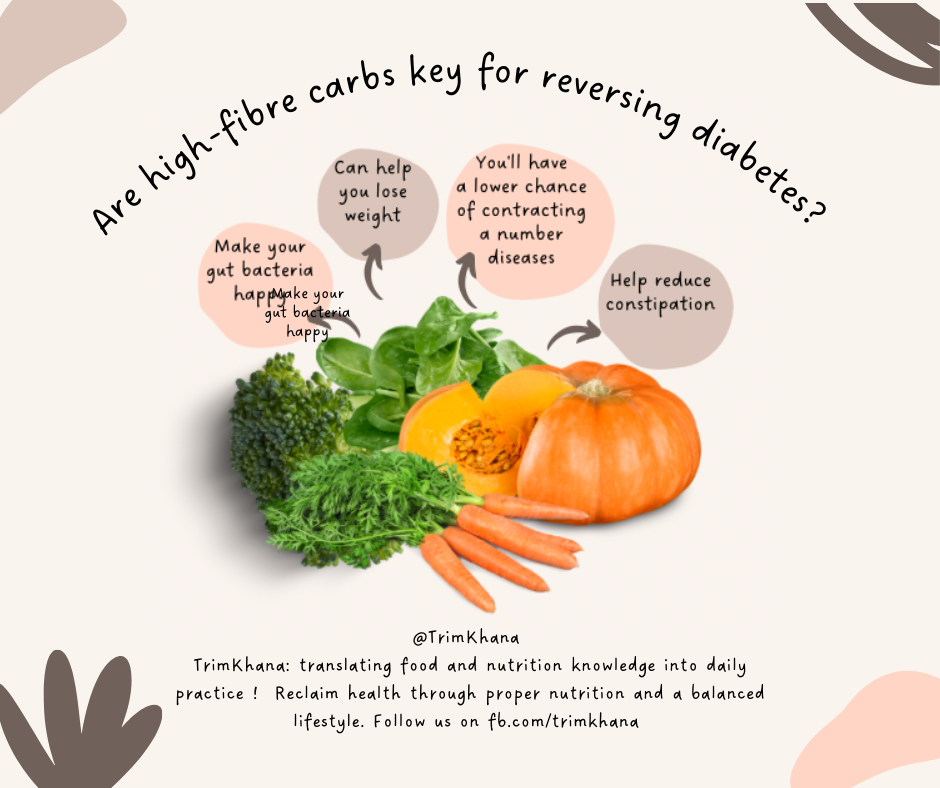Are high-fibre carbs key for reversing diabetes?

High-fibre carbohydrates have gained increasing attention in recent years as a potential strategy for managing and even reversing type 2 diabetes. This article aims to explore the evidence behind this claim and answer some frequently asked questions.
What is type 2 diabetes?
Type 2 diabetes is a chronic metabolic disorder characterized by high blood sugar levels due to either insufficient insulin production or insulin resistance. It is typically associated with lifestyle factors such as poor diet, lack of exercise, and obesity.
How does fibre affect blood sugar levels?
Fibre is a type of carbohydrate that the body cannot digest and absorb, meaning it does not raise blood sugar levels like other carbohydrates do. Instead, it passes through the digestive system largely intact, providing bulk and promoting healthy bowel movements.
How can high-fibre carbs help reverse diabetes?
Several mechanisms may explain how high-fibre carbohydrates can help improve blood sugar control and potentially reverse type 2 diabetes:
- Slow down carbohydrate absorption: Fibre can slow the rate at which carbohydrates are absorbed into the bloodstream, leading to a slower and more gradual rise in blood sugar levels after meals.
- Increase insulin sensitivity: Fibre intake has been associated with improved insulin sensitivity, which means the body can use insulin more effectively to lower blood sugar levels.
- Promote satiety and weight loss: High-fibre foods tend to be more filling and lower in calories, which can help reduce overall calorie intake and promote weight loss. Losing weight can improve blood sugar control and even reverse type 2 diabetes in some cases.
What are some examples of high-fibre carbohydrates?
Some examples of high-fibre carbohydrates include:
- Whole grains: oats, brown rice, quinoa, whole wheat bread and pasta, barley
- Fruits: apples, bananas, berries, oranges, pears
- Vegetables: broccoli, Brussels sprouts, carrots, sweet potatoes, spinach
- Legumes: chickpeas, lentils, black beans, kidney beans
How much fibre should I aim to consume?
The recommended daily intake of fibre is 25 grams for women and 38 grams for men. However, many people consume less than this amount, and increasing fibre intake too quickly can cause digestive discomfort. It is best to gradually increase fibre intake over several weeks and drink plenty of water to help the body adjust.
Are there any risks or side effects of consuming high-fibre carbohydrates?
Consuming high-fibre carbohydrates is generally considered safe and beneficial for most people. However, some individuals may experience digestive discomfort such as bloating, gas, or diarrhea when increasing fibre intake. It is important to start slowly and gradually increase fibre intake to minimize these side effects.
Can high-fibre carbs replace diabetes medications?
While high-fibre carbohydrates can play a role in managing blood sugar levels and potentially reversing type 2 diabetes, they should not be used as a substitute for diabetes medications without consulting a healthcare professional. Diabetes medications may still be necessary to achieve optimal blood sugar control, especially in more advanced cases.
Conclusion
In summary, high-fibre carbohydrates can be a beneficial component of a healthy diet for managing and potentially reversing type 2 diabetes. They can slow down carbohydrate absorption, improve insulin sensitivity, promote satiety and weight loss, and provide many other health benefits. However, increasing fibre intake too quickly can cause digestive discomfort, and it is important to consult a healthcare professional before making any significant dietary changes, especially if you are taking diabetes medications.


